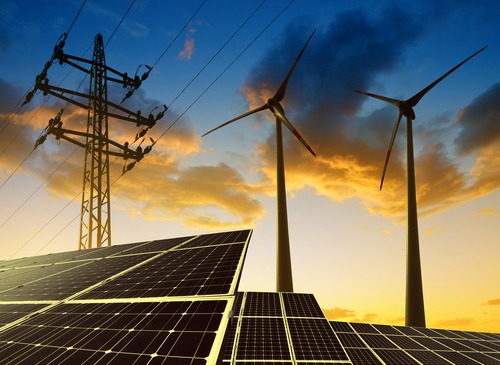Experts: Growth of renewables in energy mix highlights need for grid modernization

With the exceptional rate of growth seen in solar and wind capacity, a major challenge for the energy industry remains how to integrate renewables into the existing U.S. electric grid and how to modernize how power is generated and delivered to consumers.
Leaders in the solar, wind and electric utilities industries spoke about the growth of renewable energy and the impact it has on utilities and the grid at a National Association of State Legislatures conference in Chicago this week.
Utilities are working toward integrating renewable energy into the more than 100-year-old electric grid – an interconnected network of power plants, transmission lines and distribution centers that was never envisioned to accommodate the growth of solar and wind.
“Our industry has installed 60 percent of all solar capacity in the U.S. and is working on other initiatives to make the grid more accommodating to solar and clean energy of all types,” Anne Pramaggiore, president and CEO of Commonwealth Edison Co. (ComEd), said. ComEd is a unit of Exelon Corp. and delivers electricity to 3.8 million customers in Chicago and Northern Illinois.
ComEd’s $2.6 billion Smart Grid investment plan, a sweeping grid-strengthening and modernization effort in Illinois, has produced greater power reliability, energy savings and other benefits to consumers.
The Smart Grid plan “prepares us for the future and a future of renewables. In particular, smart meters help bring the solar business model to life,” Pramaggiore said. “They provide data to customers that enhance choice around demand control and allow measuring the value of localized resources like solar.
“The utility industry has become over the last few years the conduit for 90 percent of consumer-funded energy efficiency in this country.
“And while this work reduces sales of our core product, we have taken it on because our customers benefited by it. Our industry has promoted transportation electrification and we moved coal’s proportion of the resource mix in the U.S. from 50 percent to 34 percent in the last 10 years with more retirements on the horizon.”
Utilities will need to continue to evolve with changes in the industry to ensure participants can transact and customers can manage their choices on the grid. If the industry wants to support more wind capacity, more transmission will need to be built underground, and in the case of solar, more automation into the distribution system needs to be created, Pramaggiore said.
More transmission lines from wind turbine units to the grid are needed for the energy market to work, Tom Kiernan, CEO of the American Wind Energy Association, the trade group for the U.S. wind energy industry with more than 900 member companies, said. “What we do need is more transmission and having more wind on the grid adds to its resilience, and adding more transmission also adds to strength and resilience of the grid and providing reliable, affordable and consistent electricity to Americans.”
Wind accounted for approximately five percent of electric generation in 2015, and it is forecast to grow to 10 percent by 2020, Kiernan said.
“Grid operators have learned how to integrate and manage wind energy,” Kiernan said.
Some states are relying on wind energy to decrease their carbon footprint, in part, because they are preparing to comply with the federal Clean Power Plan. The U.S. Supreme Court has stayed implementation of the plan while it faces legal challenges from a number of states.
Iowa, for example, generates nearly 30 percent of its electricity from wind, Kiernan noted.
Lyndon Rive, CEO of SolarCity, an energy services company and the largest commercial provider of rooftop solar panels, said that solar integration must be welcomed by the utility industry.
“Some utilities see the vision and want to embrace the change, other utilities don’t see it and want to fight the change,” Rive said.
For a long period of time, Rive said, many utilities ignored the benefit that additional infrastructure can provide to the grid.
“And if you ignore that benefit, you end up building two duplicating infrastructures. You continue building an infrastructure that we have always done and a second infrastructure gets built in parallel,” Rive said. “If that continues you are going to end up with stranded assets. That is when a maximum cost shift will occur.”
Greater collaboration is needed between the solar companies and utilities to create a revenue model that benefits both industries.
“The role of policy and collaboration between the solar industry and utility industry is to look at what the value of the distributed infrastructure can provide and create a revenue model for utilities to participate in that infrastructure,” Rive said.
According to GTM Research and the Solar Energy Industries Association, solar accounted for 64 percent of all new electric generating capacity brought on-line in first quarter 2016. With more than one million individual solar installations nationwide, the industry is on pace to nearly double in size in 2016.
Grid-connected energy storage is also expected to experience growth going forward.
“In the next two to three years, you will see massive investment into storage, which will bring down the cost of storage even further,” Rive said.
